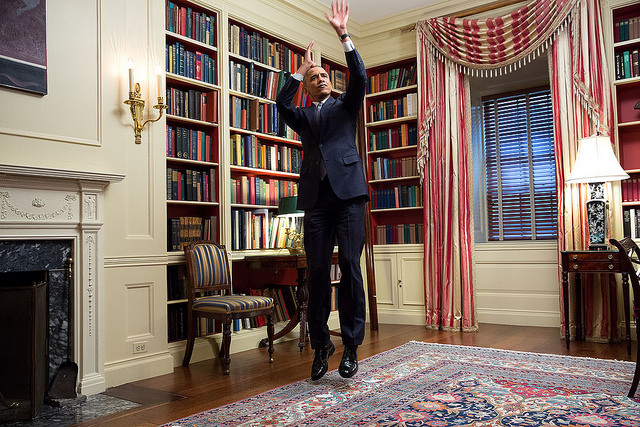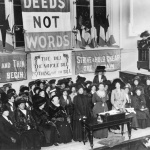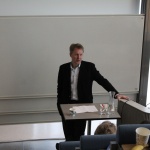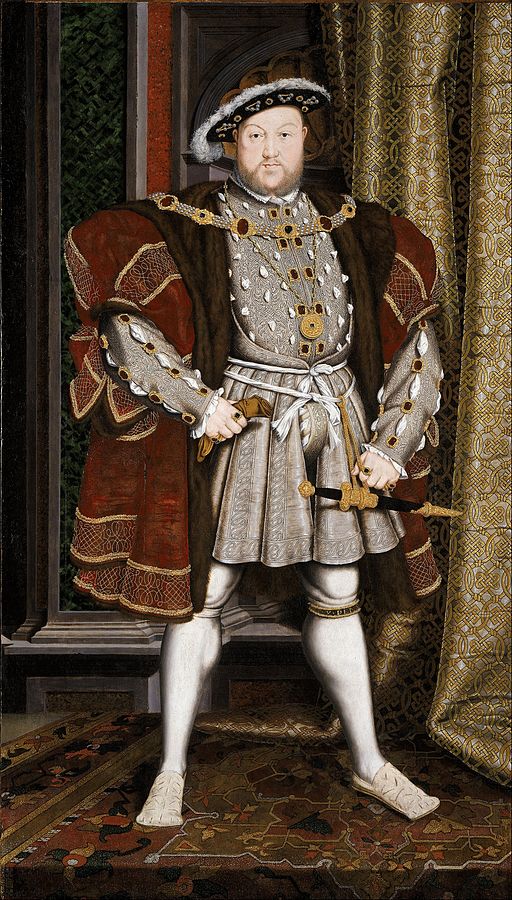 Political photos are usually a fairly boring subject, but modern internet trends and ubiquitous high-definition cameras have given us some very peculiar images – intentional or not – of some of today’s top political leaders. Some are caught shirtless at the back of a wedding and others are caught with their hands around a mysterious glowing orb, while another merely looks knowingly at packages of chicken. However, all of those images have one thing in common: they are designed to shape public perception of the subject. No matter how weird or peculiar, they try to make their subjects look good. Here are some successful and some unsuccessful attempts at propaganda by body image.
Political photos are usually a fairly boring subject, but modern internet trends and ubiquitous high-definition cameras have given us some very peculiar images – intentional or not – of some of today’s top political leaders. Some are caught shirtless at the back of a wedding and others are caught with their hands around a mysterious glowing orb, while another merely looks knowingly at packages of chicken. However, all of those images have one thing in common: they are designed to shape public perception of the subject. No matter how weird or peculiar, they try to make their subjects look good. Here are some successful and some unsuccessful attempts at propaganda by body image.
Politicians using images of themselves for political purposes is hardly a new phenomenon. Kings and political leaders as far back as the middle ages had portraits of themselves painted that exaggerated certain traits and concealed others in order to elicit a certain kind of feeling in their subjects. When one thinks of England’s Henry VIII, it is almost certainly Hans Holbein’s painting that comes to mind. In it, a well-dressed and muscled Henry is standing tall, a master of his domain practically daring the viewer to challenge him. The painting would make a great representation of Henry, if it wasn’t completely made up. Henry had just suffered an injury that left him physically weakened and, as a result, was losing strength and gaining weight. He had also lost control of the northern part of the country to a tax rebellion, making his defiant and in-control posture in the painting a complete farce. In short, the portrait was a brazen attempt at propaganda: “I’m still tough; let me show you!”. However, given that it is the image that we remember Henry VIII by 500 years later, one can say it was a quite successful attempt at passing a lie off as reality.
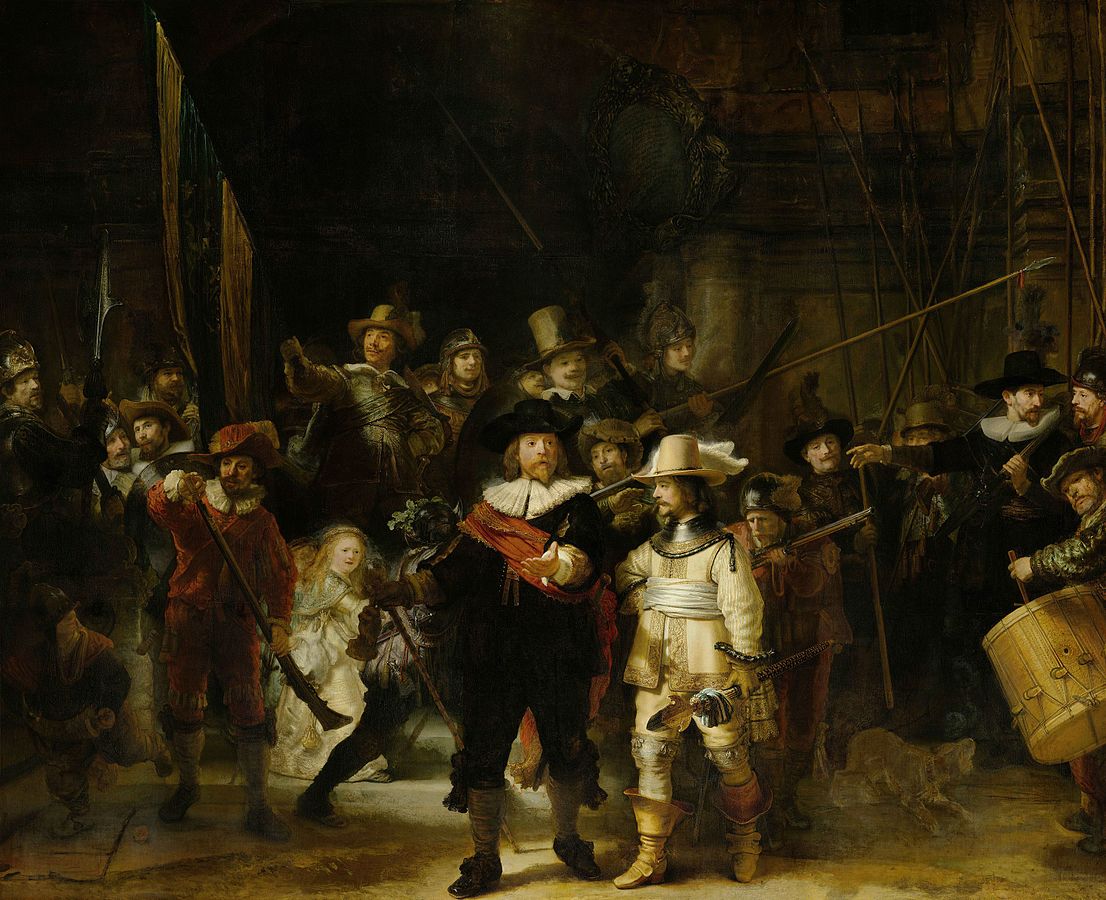 Being able to read their patrons and predict how they wanted to be portrayed was a key skill for medieval and early modern painters. Rembrandt van Rijn is considered to be one of the great Dutch masters, but even his legacy was not immune to the whims of the political leaders he was depicting. One of his most famous paintings is The Night Watch, depicting a group of Dutch upper class men engaging in their civic duty to defend the Dutch Republic. Like Holbein’s painting, it was also a lie: as the town’s mayor, Frans Banninck Cocq – the man in the center of the painting – would have almost certainly never seen actual combat. It was a success however, in no small part because it depicted the subjects exactly as they saw themselves. However, his most ambitious work was the giant 25 square meter painting of the revolt of the Batavians – the germanic people who lived in what is now The Netherlands during Roman times. The Conspiracy of Claudius Civilis, named after the leader of the Batavians, was met with far from the same acclaim as The Night Watch. Instead of depicting the Batavians, with whom the Dutch aristocracy identified, as civilized modern Europeans, he painted them as historically-correct rugged barbarians, led by a warlord Civilis. Instead of hanging the painting in the Amsterdam city hall, for which it was commissioned, it was returned to Rembrandt, who had to cut it down to a much smaller size before he managed to sell it for a small portion of its worth. While the two paintings were probably not intended as propaganda pieces, their different fates still show that powerful individuals are very aware of how they are depicted and strive to maintain an image that shows them in a good light.
Being able to read their patrons and predict how they wanted to be portrayed was a key skill for medieval and early modern painters. Rembrandt van Rijn is considered to be one of the great Dutch masters, but even his legacy was not immune to the whims of the political leaders he was depicting. One of his most famous paintings is The Night Watch, depicting a group of Dutch upper class men engaging in their civic duty to defend the Dutch Republic. Like Holbein’s painting, it was also a lie: as the town’s mayor, Frans Banninck Cocq – the man in the center of the painting – would have almost certainly never seen actual combat. It was a success however, in no small part because it depicted the subjects exactly as they saw themselves. However, his most ambitious work was the giant 25 square meter painting of the revolt of the Batavians – the germanic people who lived in what is now The Netherlands during Roman times. The Conspiracy of Claudius Civilis, named after the leader of the Batavians, was met with far from the same acclaim as The Night Watch. Instead of depicting the Batavians, with whom the Dutch aristocracy identified, as civilized modern Europeans, he painted them as historically-correct rugged barbarians, led by a warlord Civilis. Instead of hanging the painting in the Amsterdam city hall, for which it was commissioned, it was returned to Rembrandt, who had to cut it down to a much smaller size before he managed to sell it for a small portion of its worth. While the two paintings were probably not intended as propaganda pieces, their different fates still show that powerful individuals are very aware of how they are depicted and strive to maintain an image that shows them in a good light.
 When it comes to propaganda images, few are as bizarre and peculiar as those of North Korea’s ruling Kim family. While they do their share of autocratic speeches in front of mass rallies or military parades, it is the North Korean media’s steady flow of pictures of their leaders looking at things that stands out as the most peculiar. All of the images follow roughly the same format: Kim Jong Il or Kim Jong Un, surrounded by government and military officials hanging on to every word, looking at something comically mundane. From food to industrial machinery, there is practically nothing the Kims have not literally taken a look at. While it may seem like a strange form of propaganda to Western eyes, this ritual actually has great significance to the North Korean regime. One of the duties of North Korea’s leader is to observe various activities – mundane or otherwise – and suggest how they can be improved. The practice is referred to as on-the-spot guidance, and represents both the Kims’ vast knowledge and their ceaseless quest to improve North Korea. While its effect on the actual productivity of North Korea is debatable, it is nonetheless a brilliant, if perplexing, propaganda effort.
When it comes to propaganda images, few are as bizarre and peculiar as those of North Korea’s ruling Kim family. While they do their share of autocratic speeches in front of mass rallies or military parades, it is the North Korean media’s steady flow of pictures of their leaders looking at things that stands out as the most peculiar. All of the images follow roughly the same format: Kim Jong Il or Kim Jong Un, surrounded by government and military officials hanging on to every word, looking at something comically mundane. From food to industrial machinery, there is practically nothing the Kims have not literally taken a look at. While it may seem like a strange form of propaganda to Western eyes, this ritual actually has great significance to the North Korean regime. One of the duties of North Korea’s leader is to observe various activities – mundane or otherwise – and suggest how they can be improved. The practice is referred to as on-the-spot guidance, and represents both the Kims’ vast knowledge and their ceaseless quest to improve North Korea. While its effect on the actual productivity of North Korea is debatable, it is nonetheless a brilliant, if perplexing, propaganda effort.
The reigning king of absurd propaganda photos is, however, Russia’s Vladimir Putin. Based on the official photos released by his staff, the president of Russia is the most interesting man in the world. He has done everything in the past two decades, from horseback riding and wrestling with tigers to piloting submarines and leading a biker gang, making one wonder when the arguably most powerful man in the world has time for the actual business of governing. The idea behind those propaganda shots, however, is easy to understand: Putin is a strong and powerful man, projecting an image of a strong and powerful Russia abroad. The unspoken corollary – that he is too strong to be opposed – is likewise an effective message in a country fond of revolutions. However, as Putin has aged – he is turning 65 this year – his displays of machismo have increasingly began bordering on ridiculous. It is very difficult to imagine him outscoring Olympic hockey players, for example, without seeing the whole thing as an exaggerated photo-opp. Nonetheless, Putin continues to be very popular both in Russia and abroad, making the mighty sexagenarian act a successful propaganda coup.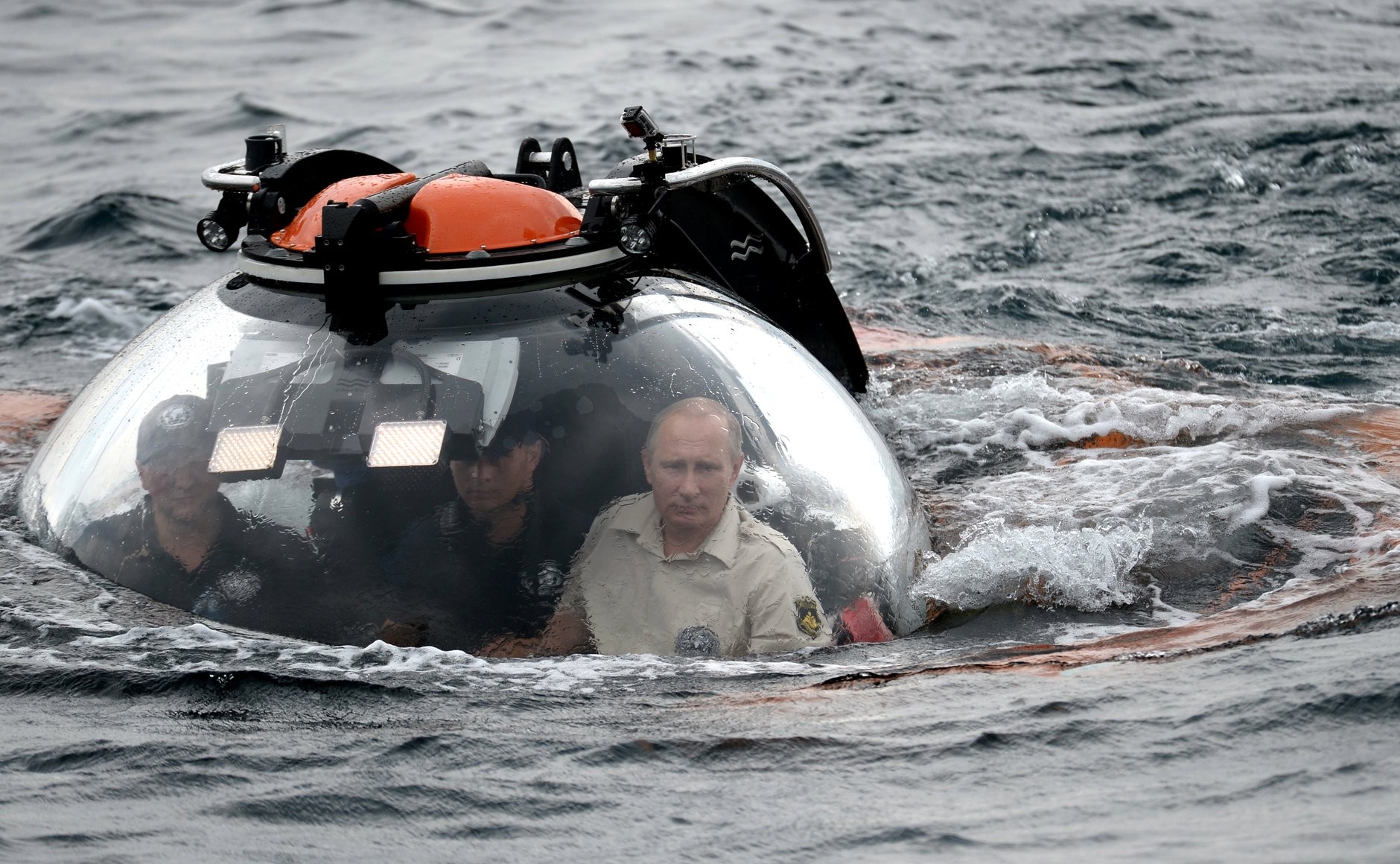
Putin’s shirtless world leader’s club has recently been joined by an unexpected new arrival – Canada’s Justin Trudeau. Yet while Putin’s photos depict him engaging in exciting and extraordinary activities, Trudeau is often not even the center of attention in his photos. Many of his most popular photos are of him in the background or joining ordinary Canadians in activities such as hiking or surfing. Even when he is pictured with other celebrities or world leaders, it is their reactions – usually very positive – to Trudeau that draw the eye. It is all, of course, much more likely to be a well-organized propaganda strategy than a series of lucky coincidences, but it nonetheless tells us a lot about how Trudeau sees himself – as a youthful and captivating frontman for Canada’s inclusive, welcoming and engaged society. Considering the collective Internet excitement every time a new photo of Trudeau pops up, the unorthodox strategy seems to be working quite well.
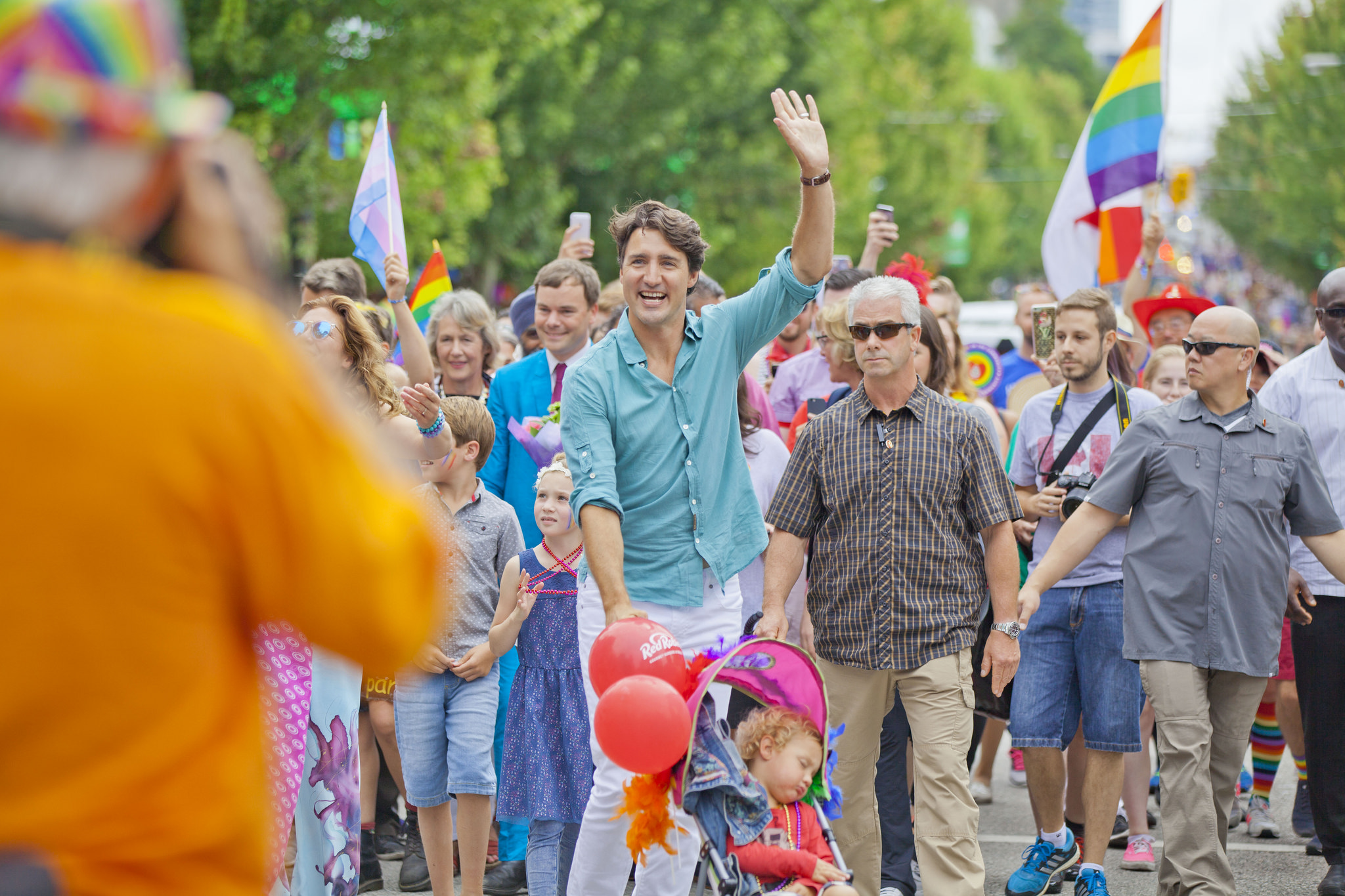 While some of the strange PR strategies seen in this article worked out well, it is important to keep your audience in mind, which is something that the US President Donald Trump’s team clearly did not when a photo emerged of him clutching a glowing orb together with Saudi King Salman bin Abdulaziz and Egyptian President Abdel Fatah al-Sisi. Meant to symbolize the opening of a Middle Eastern anti-terrorism surveillance center, the image of three men holding a globe in their hands may have served as an effective message in Egypt and Saudi Arabia, neither of which can be classified as a democracy. In the US and Europe however, the image was immediately met with ridicule, comparing Trump and his fellows to comic book villains. The story of the Orb should serve as a cautionary tale that a propaganda photo that goes viral is not always bound to be successful.
While some of the strange PR strategies seen in this article worked out well, it is important to keep your audience in mind, which is something that the US President Donald Trump’s team clearly did not when a photo emerged of him clutching a glowing orb together with Saudi King Salman bin Abdulaziz and Egyptian President Abdel Fatah al-Sisi. Meant to symbolize the opening of a Middle Eastern anti-terrorism surveillance center, the image of three men holding a globe in their hands may have served as an effective message in Egypt and Saudi Arabia, neither of which can be classified as a democracy. In the US and Europe however, the image was immediately met with ridicule, comparing Trump and his fellows to comic book villains. The story of the Orb should serve as a cautionary tale that a propaganda photo that goes viral is not always bound to be successful.
Oscar Wilde said that “there is only one thing in life worse than being talked about, and that is not being talked about.” For politicians in today’s 24-hour news cycle, that adage continues to hold true. Thanks to the ubiquity of access to digital media, even in closed-off countries like North Korea, politicians have to compete with cats, ponies and Harambe the Gorilla for the public’s attention. With the internet’s natural attraction to the surreal and the peculiar, it is no surprise that some of the most well-known politicians in the world are those with weird and unusual media strategies. While shirtless Justin Trudeau is unlikely to enter the canon of world art the same way Hans Holbein’s Henry VIII did, the two are both part of the same ancient artistic tradition.
By Yaroslav Mikhaylov
Photo credit
Cover Photo: Amanda Lucidon, Official White House Photo, official government work
Image 1: Workshop of Hans Holbein the Younger 1497/8, Public Domain via Google Art Project
Image 2: Rembrandt van Rijn, Public Domain via Wikimedia Commons
Image 3: Rembrandt van Rijn, Public Domain via Wikimedia Commons
Image 4: Korean Central News Agency via kimjongillookingatthings, official government work
Image 5: Office of the President of the Russian Federation, official government work
Image 6: GoToVan, licensed under Creative Commons Attribution 2.0 Generic
